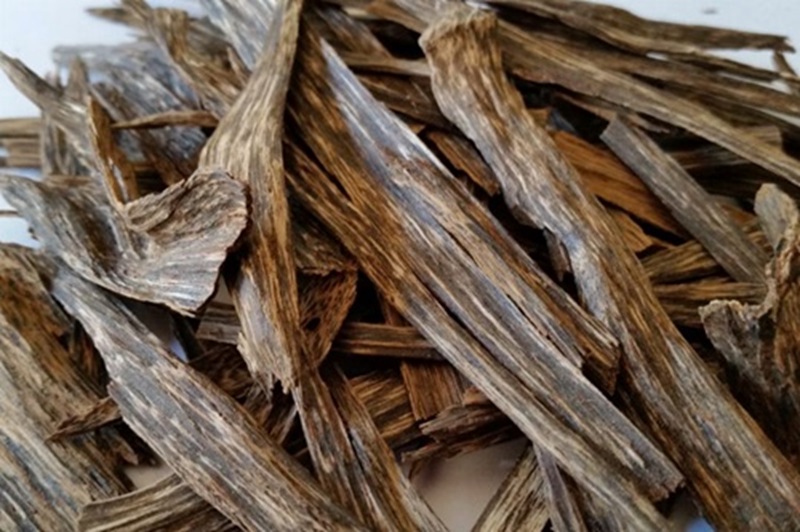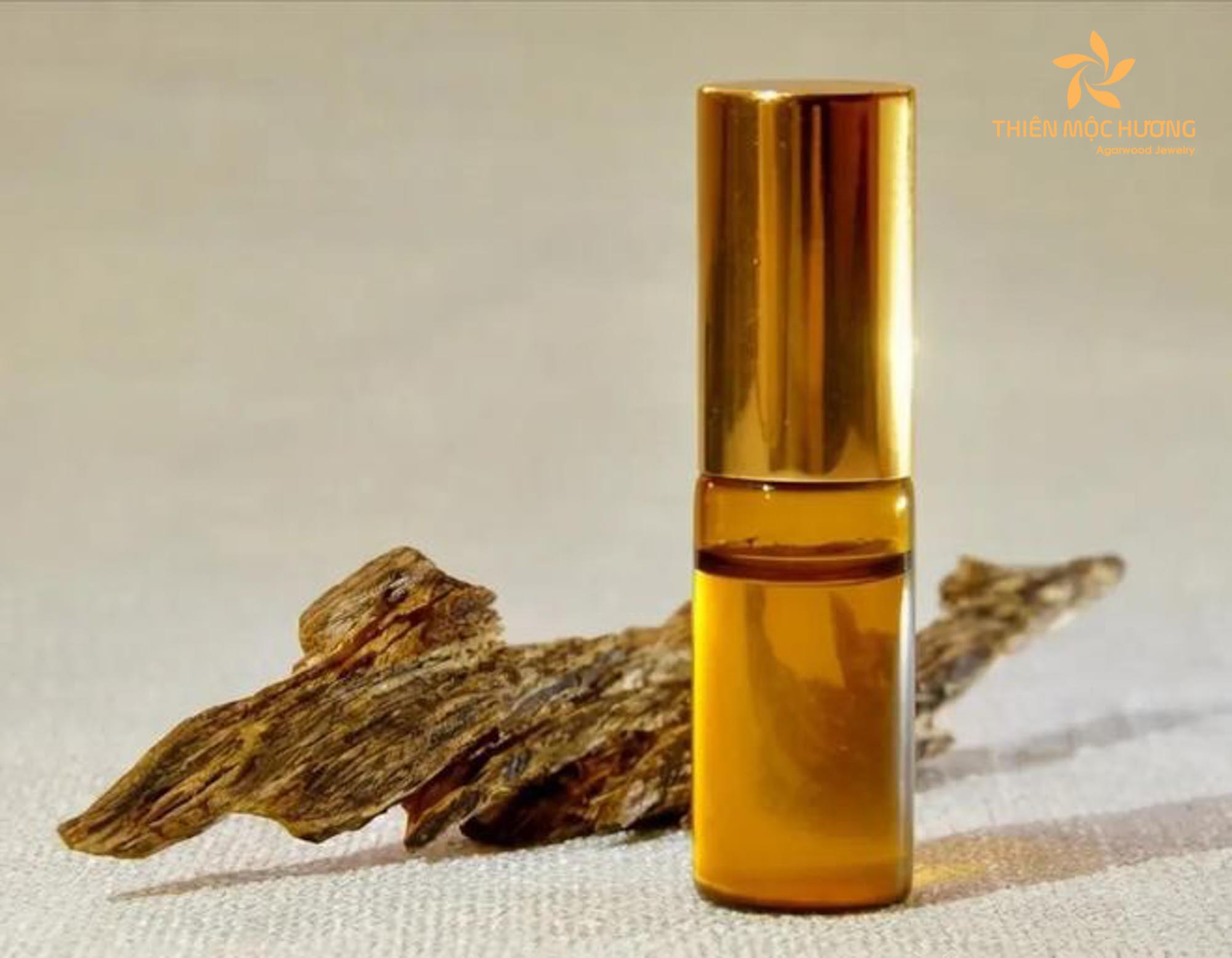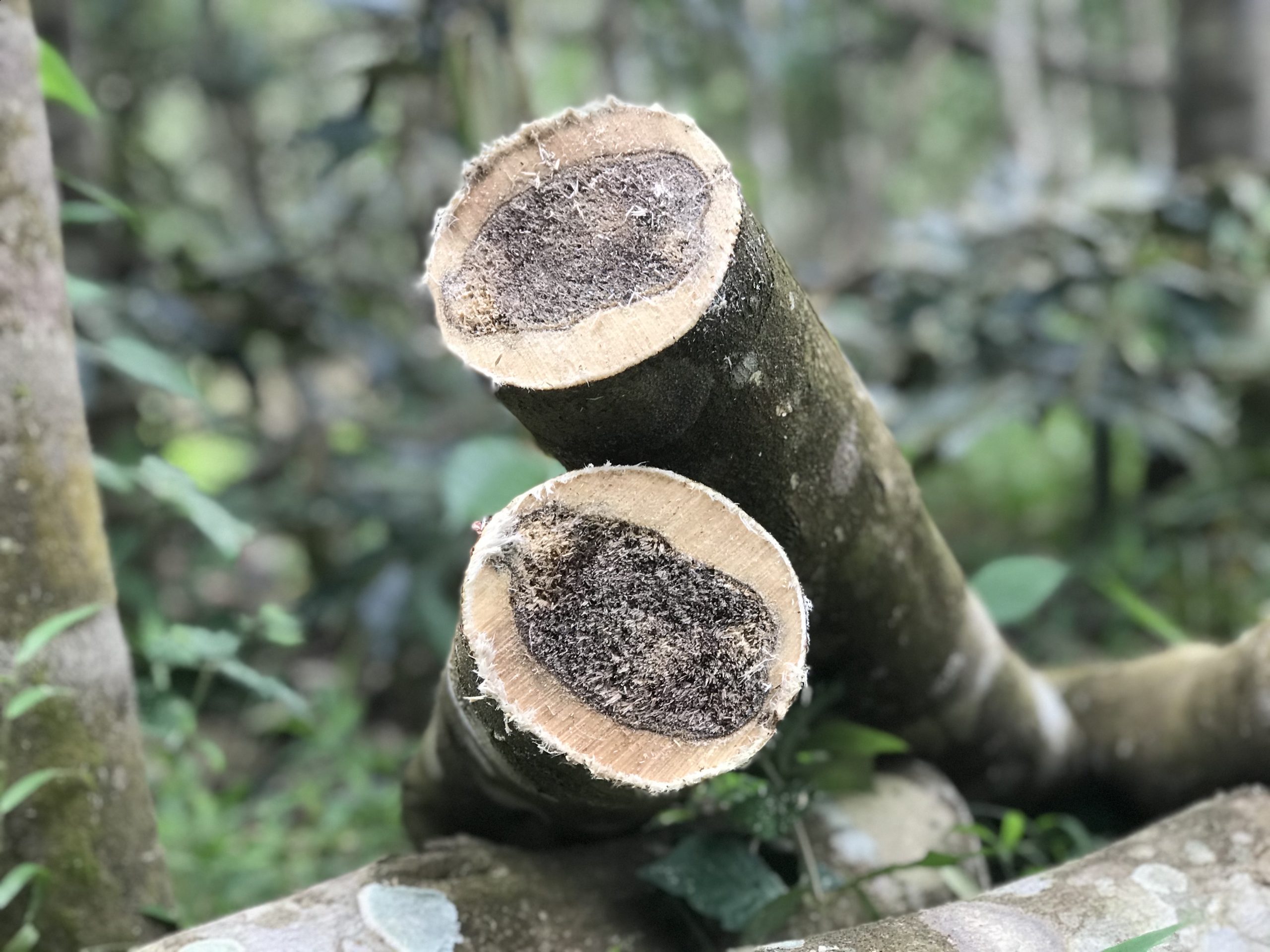Agarwood, often referred to as “liquid gold,” is one of the world’s most precious and expensive natural resources. Known for its rich, complex aroma, agarwood has a storied history across various cultures, from ancient temples to modern luxury perfumes. But what exactly makes it so expensive? Why is it so highly sought after, and how is it cultivated and processed?
What is Agarwood? Understanding the Basics
Agarwood is more than just wood; it’s an aromatic resin that forms in certain species of Aquilaria trees when they become infected with a specific type of mold. The result is a dark, dense, and fragrant wood that has captivated human senses for centuries. Unlike most types of wood, which are simply valued for their appearance and strength, agarwood is unique because of its distinctive fragrance, which can be extracted and distilled into essential oils or used as incense.
How Agarwood is Produced: Nature’s Complex Process
Agarwood is not naturally present in healthy Aquilaria trees. The production process starts only when the tree becomes infected by a mold from the Phialophora genus, which triggers a defense mechanism. In response, the tree produces a dark resin, which gradually permeates the affected areas, transforming the previously pale wood into dense, fragrant agarwood.
This transformation can take years or even decades, making agarwood production a slow, organic process that relies heavily on nature. Unlike other woods that are harvested and immediately used, the unique creation of agarwood is unpredictable and labor-intensive, which contributes significantly to its high value.
Different Names and Cultural Significance of Agarwood
Agarwood is known by various names across different cultures, each reflecting its rich history and spiritual importance:
- Oud – Commonly used in the Middle East, particularly in countries where agarwood is a key component in traditional perfumes.
- Gaharu – Known by this name in Indonesia and Malaysia, where agarwood is deeply rooted in local customs.
- Aloeswood – Often used in ancient texts and sometimes still used in Southeast Asia and India.
Each of these names embodies agarwood’s unique place in human culture and its role in ceremonial, medicinal, and recreational practices worldwide.

Why Is Agarwood So Rare?
Agarwood’s rarity is one of the primary reasons for its high price. Unlike other types of wood that can be sustainably harvested and regrown, agarwood formation is rare and unpredictable. Only a small percentage of Aquilaria trees, which grow primarily in Southeast Asia, develop the resin that makes agarwood so valuable. Here, we’ll look at the unique biological and environmental factors contributing to its scarcity.
The Biology Behind Agarwood Production
Not every Aquilaria tree can produce agarwood. In fact, studies estimate that only about 2% of Aquilaria trees in the wild naturally produce this precious resin. This rarity is due to several factors:
- Infection Requirement: Agarwood is created only when a tree becomes infected with a specific type of mold. If the tree doesn’t experience this stress or infection, it will never produce agarwood.
- Time-Intensive Process: Even when infected, the production of agarwood resin is slow, taking anywhere from a few years to several decades. This slow growth process adds to the scarcity of natural agarwood, as only mature trees are capable of yielding high-quality resin.
- Limited Natural Habitat: Aquilaria trees are native to specific tropical forests in Southeast Asia, including regions of India, Bangladesh, Bhutan, and parts of Southeast Asia such as Thailand, Vietnam, and Indonesia. Due to deforestation and habitat loss, wild Aquilaria populations have drastically decreased, further limiting agarwood production.
Environmental Conditions Necessary for Agarwood Formation
Agarwood formation is not only rare but highly dependent on certain environmental factors. The tree must experience a form of stress, such as physical injury, fungal infection, or even insect attacks, which prompts it to release the resin. Ideal conditions include:
- Warm, Humid Climates: Aquilaria trees thrive in tropical environments, which provide the right humidity and temperature for resin formation.
- Stress Factors: Injuries or infections are often required to kickstart resin production, but this is a delicate balance. Overstressed trees may die before they produce significant amounts of agarwood, while insufficient stress may result in no resin formation at all.
Declining Wild Aquilaria Population
The decline of Aquilaria trees in the wild is a critical factor in agarwood’s rarity. As demand for agarwood has risen, many wild populations have been overharvested, leading to endangerment. Conservation organizations, such as CITES (Convention on International Trade in Endangered Species of Wild Fauna and Flora), now regulate the trade of agarwood to prevent further decline. However, these regulations have inadvertently increased agarwood’s market value, as legal, sustainable harvesting is both challenging and costly.
The rarity of agarwood makes it an attractive investment for those who view it as a valuable commodity. Additionally, its rarity gives it a kind of mystique and exclusivity, fueling its desirability even further.
How is Agarwood Harvested and Processed?
Producing high-quality agarwood requires extensive skill and time. Both traditional and modern methods of harvesting have distinct advantages and challenges, contributing to the high costs associated with agarwood.
Traditional Harvesting Techniques
Historically, agarwood was harvested from wild Aquilaria trees by skilled woodworkers who could identify infected areas of the tree. This process is delicate, as improper cutting can damage the resin or fail to capture the most aromatic sections. Harvesters typically use techniques such as:
- Precision Cutting: Skilled workers carefully carve out the agarwood without disturbing the uninfected portions of the tree.
- Selective Harvesting: Only infected, resin-filled areas are harvested, leaving other parts of the tree intact when possible.
This approach allows for high-quality agarwood extraction but is labor-intensive and requires an experienced eye. This process adds value to the wood, as it’s challenging to find trained artisans with the knowledge to identify and extract agarwood properly.
Modern Cultivation and Inoculation Techniques
As wild agarwood becomes harder to find, many producers have turned to artificial inoculation to cultivate agarwood on farms. Inoculation involves introducing the mold artificially to Aquilaria trees, accelerating the formation of agarwood. While this method is more sustainable, it is also costly and not without its challenges:
- Long Growing Period: Even with inoculation, the resin formation process takes years, as trees must mature before they are capable of producing agarwood.
- Skilled Labor Requirement: Inoculation requires careful monitoring and expertise to ensure the resin develops uniformly, making labor costs high.
- Variable Quality: Artificially inoculated agarwood may differ in quality from naturally formed agarwood, with some purists arguing that the scent profile is not as rich or complex.
By combining traditional and modern techniques, producers attempt to meet demand while minimizing environmental impact. However, these methods are expensive, adding to the high price of agarwood.
The Lengthy and Labor-Intensive Processing
Once harvested, the processing of agarwood is equally demanding and can involve several stages, including:
- Drying and Curing: Agarwood needs to be carefully dried and sometimes fermented to bring out the full aroma.
- Distillation for Oud Oil: For agarwood essential oil, known as oud, the wood must undergo an extensive distillation process that can take weeks. Even after this lengthy process, only a tiny amount of oil is extracted from a large quantity of wood, making it one of the most costly essential oils in the world.
- Hand-Crafting for Incense and Fragrance: Agarwood chips and powder are often ground by hand to ensure quality, especially when used for incense.
Each of these processes requires expertise, specialized equipment, and time. Combined with the challenges of cultivation and scarcity, these labor-intensive methods explain why agarwood and its oil are so costly.

Cultural and Historical Significance of Agarwood
Agarwood holds a profound place in history, revered across various cultures and religions for its distinct aroma and perceived spiritual properties. Its use spans centuries and continents, from ancient Egypt and the Far East to contemporary Middle Eastern and Asian societies. The cultural and historical significance of agarwood adds to its value, making it more than just a commodity—it’s a symbol of heritage and spirituality.
Agarwood in Different Cultures and Religions
Agarwood has played a unique role in spiritual practices and rituals worldwide. Here’s how it’s valued across some key cultures:
- Middle Eastern Culture: Agarwood, known as oud in Arabic, is deeply embedded in Middle Eastern customs. It’s often burned in homes as incense to welcome guests, signify respect, and create a comforting, luxurious atmosphere. Oud oil is a staple ingredient in many traditional perfumes, with an earthy, smoky fragrance that evokes a sense of mystique and elegance.
- Chinese and Japanese Culture: In East Asia, agarwood, also known as chen xiang in China, is prized for meditation and religious ceremonies. The wood’s calming scent is thought to bring spiritual enlightenment, making it popular in Buddhism and Taoism. Japanese culture has developed the art of kōdō, or “the way of fragrance,” a highly refined incense ceremony centered around agarwood.
- Indian Culture: Known as agaru or aloeswood, agarwood has been used in Hindu rituals and Ayurvedic medicine for centuries. It’s also mentioned in the Vedas as a sacred plant that promotes peace and spiritual clarity. Agarwood is used in many Indian temples as incense and for making beads used in meditation.
- Southeast Asian Culture: In countries like Vietnam, Thailand, and Indonesia, agarwood—often called gaharu—is highly valued and deeply woven into local traditions. It is used for ceremonial offerings and is often gifted to show reverence or respect.
These cultural uses not only demonstrate agarwood’s historical roots but also reinforce its reputation as a luxury and spiritual good. Its role in religious and cultural practices has driven demand throughout history, adding an intangible value to its already high price.
Historical Demand and Usage
The history of agarwood stretches back thousands of years, with records indicating its use in ancient Egypt, Mesopotamia, and China. Pharaohs were believed to have used agarwood in burial rituals, valuing it as a tool to guide the soul to the afterlife. Likewise, ancient Chinese emperors would burn agarwood incense to purify the air and calm the mind, considering it a royal fragrance.
In ancient times, agarwood was often traded along the Silk Road, where it was prized as a luxury item and a diplomatic gift. Its rarity and value made it a status symbol among nobility and royalty, and it became a key item in the incense trade routes across Asia, the Middle East, and Europe.
This long-standing tradition has carried into modern times. Today, high-grade agarwood remains a luxury item and an essential component of traditional and modern perfumery in the Middle East and Asia, where oud-based fragrances continue to hold symbolic importance.
Case Study: The Role of Agarwood in Middle Eastern Perfumery
In Middle Eastern culture, oud oil is synonymous with luxury. Oud-based fragrances are often layered to create rich, complex scent profiles and are a significant part of identity and personal grooming. Many Middle Eastern fragrance houses and luxury brands source high-quality agarwood from countries like India and Vietnam to craft exclusive perfumes. Some renowned perfumers, such as Amouage and Abdul Samad Al Qurashi, focus almost entirely on oud oils and agarwood, underscoring its luxury status in the fragrance market.
Agarwood’s historical and cultural ties to rituals, luxury, and status have established it as a unique material, far more than just a wood or scent. This significance has led to a legacy of demand and appreciation that drives its high price even further in the modern market.

Why Is Agarwood So Expensive? Key Factors Driving Its Price
The high cost of agarwood can be attributed to a mix of rarity, labor-intensive production, and high demand in luxury markets. Each stage of its journey—from tree to product—is complex, time-consuming, and requires skilled labor. Below, we’ll dive into the specific factors that make agarwood one of the world’s most expensive natural resources.
The Supply and Demand Imbalance
The limited supply of agarwood, coupled with increasing global demand, is a fundamental reason for its high price. Here’s a breakdown of how these two forces contribute to agarwood’s scarcity and value:
- Limited Natural Sources: As we’ve discussed, wild Aquilaria trees are scarce, and only a small percentage of these trees produce agarwood. Deforestation and overharvesting have further reduced natural supplies, making agarwood increasingly rare in the wild.
- Growing Demand: Demand for agarwood comes not only from traditional markets in the Middle East and Asia but also from emerging markets in Europe and the Americas. Oud-based perfumes, incense, and even luxury personal care items now attract global buyers, adding pressure to an already limited supply.
- Premium Market Position: Agarwood’s exclusivity has positioned it as a luxury item, making it desirable for niche and high-end consumers. Many people view agarwood as a symbol of wealth and status, especially in countries like Saudi Arabia, Qatar, and the UAE, where high-quality oud oil is a staple in personal care.
Because demand for agarwood continues to rise, prices remain high and are expected to increase further as supplies dwindle. The law of supply and demand keeps agarwood at a premium, with top-quality pieces often costing more per gram than gold.
Labor-Intensive Cultivation and Production Process
Producing agarwood is not only time-intensive but also labor-intensive. From cultivating Aquilaria trees to processing the resinous wood, each step requires specialized knowledge and skills. Below are some of the main processes contributing to agarwood’s price:
- Skilled Inoculation Techniques: Since wild agarwood is rare, many producers now grow Aquilaria trees on plantations. To produce agarwood resin, the trees are artificially inoculated with a specific mold. This process requires expert care, as incorrect inoculation can harm the tree or result in substandard agarwood.
- Monitoring and Maintenance: After inoculation, trees must be monitored for years to ensure proper resin formation. This requires significant labor and expertise, as environmental factors must be controlled to avoid excessive stress on the tree.
- Manual Harvesting: Harvesting agarwood is an art form. Skilled laborers carve out resinous sections of wood without damaging the delicate agarwood. The process is labor-intensive, requiring precision and patience to preserve the quality of the wood.
Environmental and Regulatory Pressures
Because Aquilaria trees are endangered, environmental and legal pressures impact the agarwood market significantly. Regulations by bodies like CITES enforce strict guidelines on harvesting and exporting agarwood to prevent overexploitation. While these measures are essential for conservation, they also make legal production more expensive. Here’s how regulations affect agarwood prices:
- Controlled Harvesting: Legal production of agarwood requires licenses and permits, often available only to certified plantations and harvesters. These restrictions make the trade process longer and more expensive.
- Higher Production Costs: Regulations require sustainable and ethical practices, which can add to the costs for agarwood producers. Many of these sustainable practices involve plantation-based cultivation, where artificial inoculation techniques are costly but environmentally necessary.
- Restricted Exporting: Agarwood is a regulated item in many countries, meaning there are limited avenues for legal exporting. These restrictions contribute to the exclusivity of agarwood, as only a small portion is legally traded.
By complying with these regulations, agarwood producers incur higher costs, which in turn are passed on to buyers. However, certified agarwood also reassures consumers that they’re purchasing an ethically sourced product, which is increasingly important in luxury markets.
The High Cost of Distilling Agarwood Oil
Oud oil, derived from agarwood, is one of the most expensive essential oils worldwide. This is due to the intricate and lengthy process required to extract even a small amount of oil:
- Low Yield of Oil Extraction: Agarwood yields very little oil; it takes tens of kilograms of wood to produce a single ounce of oud oil. This low yield significantly drives up production costs, as large quantities of raw agarwood are needed.
- Multiple Stages of Distillation: The distillation process, which can take up to two weeks or longer, is complex and requires high-quality equipment. The wood is often soaked, heated, and distilled several times to produce the purest form of oud oil. This painstaking process results in a luxurious, richly scented oil with a high price tag.
- Variability in Oil Quality: Oud oil quality varies based on factors like the tree’s age, resin content, and distillation method. High-grade oud, which is more fragrant and complex, fetches a premium price due to its exceptional quality.
Each factor—the rarity of the wood, the labor-intensive process, regulatory pressures, and the high cost of extraction—contributes to agarwood’s luxury status. This explains why agarwood is so expensive, positioning it as a valuable commodity in global markets.
